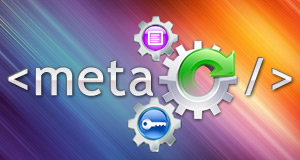Why is translation important in the education industry?
The number of students studying abroad is rising worldwide, which means it has never been more important for universities to translate their websites into different languages to try to capture the attention of these bright and inquisitive young minds. Having webpages translated and localised into foreign languages will help overseas prospective students to find the information they’re looking for on your website and also give a good impression of your institution.
Many students now name the quality of a university’s website as a major factor influencing their decision to apply to that institution. A university website that does not contain all the relevant information in an easy-to-find manner, or has low quality content, will give the impression of being a low quality institution.
The same goes for translation. Upon realising the importance of website translation in attracting international students, the worst thing you can do is to do a sloppy job and produce low quality translations.
So, how should you go about translating your website to ensure your translations are of a high quality and do justice to your university?
Tips for translating your university website
1. Translate the most important pages first
First of all, decide which webpages you want to translate. It may not be necessary for you to translate every single page on your website. The most important information to translate is probably about the admissions process, your programmes and visa requirements.
2. Only use experienced, professional translators
Once you’ve decided which webpages to translate, make sure you use a professional, experienced translator who is a native speaker of your target language and has experience of translating similar material (i.e. education/website content). Avoid machine translations (such as Google Translate) and inexperienced translators who have not been trained in this skill.
3. Consider SEO-localisation
Consider undertaking SEO-localisation, which is an efficient workflow that combines search engine optimisation (SEO) with translation. The result is translated content that is search-engine friendly and should rank highly for your target keywords. By combining the two processes into one, you save time and money which you would otherwise have to spend later doing the two processes separately.
4. Be mobile-conscious
Finally, make sure that your translated webpages are user- and mobile-friendly. Remember that most young people access the internet from their mobile phone, so this isn’t a step to be skipped over!
I hope this has given you a useful introduction to translation in the education industry. For more in-depth information, you can read the full guide here. It’s free!
Barbara Ripoll Sanchez
Latest posts by Barbara Ripoll Sanchez (see all)
- Translation for the travel and tourism industry - February 22, 2019
- How to approach website translation in the education industry - November 26, 2018






